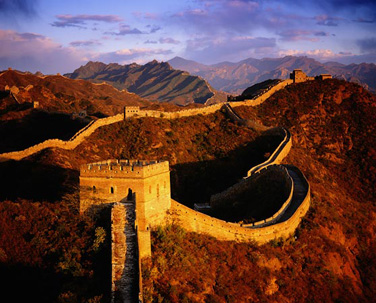News
UB group taking the ‘silk road’ to China

Tours of Chinese historic sites such as the Great Wall are on the agenda for 12 UB students visiting China as part of the Silk Road to the Future program.
Twelve UB student leaders are taking the “Silk Road to the Future” on Thursday as they begin the once-in-a-lifetime experience of traveling through China and meeting their Chinese counterparts.
The students, accompanied by Dennis Black, vice president for student affairs, and his wife, Lani, are going to Beijing, where they will spend seven days attending seminars on leadership, touring Chinese universities and seeing historic sites, such as the Great Wall. The trip, part of the SLIDE (Student Leadership International Dialogue & Exchange) program at UB, is being conducted under the auspices of the Silk Road to the Future program sponsored by the Legends of China Foundation.
Legends of China is a non-profit, non-governmental organization that offers opportunities for communication and interaction among artists, educators, students and environmentalists from China, the United States and other interested nations. The Silk Road to the Future program was created by Legends of China “as a celebration of international friendship and goodwill between college students from the most prestigious U.S. and Chinese universities.” Participation is by invitation only.
Black notes that participating in the Silk Road program provides “a unique opportunity” for the UB students to interact with students from Chinese universities, as well as students from other U.S. institutions taking part in the program.
He says the trip springs from a previous trip he made to Beijing in November 2008 to attend a summit of student affairs officials from the U.S., Canada and China.
“While I was there, it was clear that UB and Buffalo were special and important to the Chinese education and government officials,” he recalls. At the end of the summit, Black was invited to put together a student group to take part in the Silk Road to the Future program.
He points out that among the U.S. institutions that have participated in the program are schools from the University of California system. “The invitation was extended to UB because of the relationships and programs we’ve had in China,” he adds.
UB students interested in going to China had to submit an application, write an essay and go through an interview. The 12 students chosen comprise the “best of” UB student leadership, he says.
Black explains that in keeping with the theme of the trip, each participant is asked to create a silk banner that will be displayed during the trip. He says his wife is a kindergarten teacher and her banner features handprints of her students. Black has fashioned a similar banner, but his handprints were made by incoming UB students during an orientation session.
According to the Legends of China Foundation, more than 10,000 “ambassadors of peace” from some 200 prestigious universities across the United States and Canada, as well as from more than 400 top Chinese institutions have taken part in the Silk Road to the Future since it was established in 2001.

Reader Comments